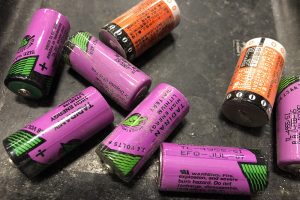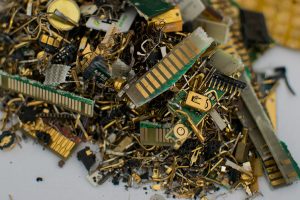 Machinery at the shuttered BlueOak Arkansas e-scrap smelting plant is being auctioned off late this month.
Machinery at the shuttered BlueOak Arkansas e-scrap smelting plant is being auctioned off late this month.

 Machinery at the shuttered BlueOak Arkansas e-scrap smelting plant is being auctioned off late this month.
Machinery at the shuttered BlueOak Arkansas e-scrap smelting plant is being auctioned off late this month.

Todd Koleski and Jennifer Ganka of Defense Logistics Agency Disposition Services
It’s well-known the U.S. military is a huge buyer of goods, including electronic equipment. Officials recently shed light on how the Department of Defense approaches disposition.
 Oregon regulators announced they’ve settled a case against e-scrap processor Total Reclaim, centered on the company misleading customers about how devices were being handled. The company had previously acknowledged the settlement.
Oregon regulators announced they’ve settled a case against e-scrap processor Total Reclaim, centered on the company misleading customers about how devices were being handled. The company had previously acknowledged the settlement.
 One of the country’s largest insurers recently purchased an on-site provider of smartphone and tablet repairs.
One of the country’s largest insurers recently purchased an on-site provider of smartphone and tablet repairs.
 Two government initiatives looking to energize the lithium-ion battery recycling sector have officially launched, offering prize money to recycling entrepreneurs and a dedicated laboratory to house research projects.
Two government initiatives looking to energize the lithium-ion battery recycling sector have officially launched, offering prize money to recycling entrepreneurs and a dedicated laboratory to house research projects.

Revenue and earnings for global e-scrap processor Sims Recycling Solutions dropped in the second half of 2018 compared with the same period a year earlier.
 Despite trying economic times for much of the industry, Missouri-based EPC has found success by sticking with its specialty: refurbing and remarketing used IT equipment.
Despite trying economic times for much of the industry, Missouri-based EPC has found success by sticking with its specialty: refurbing and remarketing used IT equipment.

Part of URT’s CRT glass processing system in Janesville, Wis.
One of the country’s largest e-scrap companies is recycling CRT glass into a marketable product that could reduce the processor’s dependence on erratic downstream markets for leaded material.
 Global economic conditions have helped push up the scrap value of principal metals used in electronics.
Global economic conditions have helped push up the scrap value of principal metals used in electronics.
 ITAD firm Re-Teck opened its first Dutch location this week, a facility that the company says will bolster its European market reach.
ITAD firm Re-Teck opened its first Dutch location this week, a facility that the company says will bolster its European market reach.
